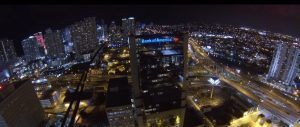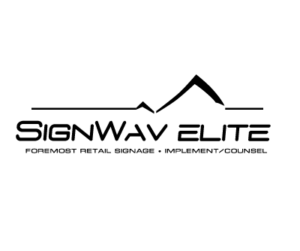 The term “lighting retrofit” can be a little overwhelming. What does it mean? What is involved? How much will it cost? A capital improvement that can increase the market value of your property, a lighting retrofit converts older, outdated lighting technology (fluorescent and HID lamps, for example) to newer, more energy-efficient technology (such as LEDs).
The term “lighting retrofit” can be a little overwhelming. What does it mean? What is involved? How much will it cost? A capital improvement that can increase the market value of your property, a lighting retrofit converts older, outdated lighting technology (fluorescent and HID lamps, for example) to newer, more energy-efficient technology (such as LEDs).
As recently as five years ago, the U.S. Department of Energy (DOE) said that linear fluorescent lamps accounted for more than three-quarters of commercial building lighting service. Imagine how much energy (and money) could be saved if those fluorescent lamps were converted to LEDs, much like these bright LED lanterns, which can offer between 50 percent and 90 percent energy savings. The DOE says that national energy costs could be decreased by 25 percent if LED technology reaches projected market penetration levels in the next 15 years.
Here’s what you can expect to happen in your commercial or institutional building when LEDs are installed vs. fluorescents or HIDs:
- Lamp life (up)
- Operating costs (down)
- Energy costs (down)
- Replacement time and costs (down)
- Heat emittance from lamps (down)
- Facility cooling loads (down)
- Risk of shock during replacement (down)
 Does My Building Need a Lighting Retrofit?
Does My Building Need a Lighting Retrofit?
So how do you know if you need a lighting retrofit? It’s a valid question to ponder; not every commercial and institutional building requires a lighting retrofit, depending on its age, the current systems in place, and future energy or sustainability goals.
To determine whether your building would benefit from a lighting retrofit, ask yourself these questions:
- Do I want to reduce my building’s lighting energy costs?
- How old is my building’s lighting technology?
- Is any of my building’s lighting about to be phased out due to code changes?
- Am I spending more than I’d like on lamp maintenance and replacement costs?
- Are there certain parts of my building that are difficult to service?
- Are my lights in use for more than 12 hours per day?
- Does my lighting system support our organization’s sustainability initiatives?
Types of Lighting Retrofits
A common misconception is that an LED lighting retrofit automatically means that fixtures must be replaced. Lighting retrofits can be completed in three different but simple ways, depending on your existing lamps and lighting system. The choice is yours. Now how do you decide?
No. 1: Direct Lamp Change-Outs
LEDs don’t require separate ballasts like fluorescent fixtures; instead, they make use of internal drivers. Some lighting fixtures can be retrofitted by simply changing out the bulbs (swapping fluorescent tubes with LED tubes and removing the ballast and fluorescent lamp holders, for example). Normally the lowest-cost option in terms of labor and materials for both indoor and outdoor applications, direct lamp change-outs allow LEDs to go straight into traditional fluorescent tube troffers or HID fixtures.
Many replacement applications now offer a plug-and-play option that installs directly into existing fixtures. With no need to remove the ballast fluorescent tube fixture – whether it’s a quick-start, instant-start, programmed-start, or emergency fixture – simply replace the existing fluorescent tube with the right LED tube and you’ll see the energy savings start rolling in right away.
No. 2: Retrofit Kits
Another upgrade option is an LED retrofit kit, complete with LEDs and driver, which mounts directly into the existing luminaire housing. These retrofit kits allow you to keep your original fixtures and convert them to energy-saving LED fixtures. For example, retrofit kits can convert recessed fluorescent lighting fixtures (troffers) by reusing the top portion of the existing fixture.
Depending on your existing lighting system, labor costs for retrofit kits may be higher if electricians have to perform additional wiring modifications or follow special component-removal processes.
No. 3: Replace Entire Fixtures
Replacing the entire existing lighting fixture with a new LED fixture is another option, and also the most costly. Lighting system replacement may be your best option if the condition of sockets isn’t good (obvious wear or major cracks) or poor lens/louver condition is apparent.
Another factor to consider: If current lighting fixtures are completely enclosed, fixture replacement may be the best option for your building. LEDs shouldn’t be used in tightly enclosed fixtures unless they are approved for use in enclosed spaces. When heat can’t dissipate from the lamp’s heat sink, premature lamp failure may result.
If above-the-ceiling access is restricted or not recommended in your facility, entire fixture replacement may not be an option.
Calculating Your Lighting Retrofit ROI
Anything you can do to control energy costs gives your organization a competitive advantage. LEDs impact energy usage in several ways. There are many factors to consider when calculating the full return on your LED lighting retrofit investment:
- The reduction in lighting energy usage – the typical LED lamp saves between 50% and 90 percent as compared to other lighting options
- The impact of LEDs on the HVAC system – they don’t give off as much heat as fluorescents, so cooling loads may be reduced
- The reduced frequency of lamp replacement – including labor costs (necessary lighting maintenance can be reduced to nearly zero for the next several years)
- Rebates offered by local utilities – ENERGYSTAR.GOV can tell you what types of offers are available in your area
- Incentives at the state and local government levels – ENERGY.GOV lists tax credits, rebates and savings available by state
- The increase in efficiency – LEDs emit light downward vs. the 360-degree light pattern emitted by fluorescent bulbs, which illuminates more than the intended target
When you select the right lighting retrofit option for your facility, your LED system is already well on its way to providing several years of savings and quality performance. This makes it extremely worthwhile to say “yes” to LED lighting.
______________________________________________________________
Jody Cloud is a lighting consultant who offers continuing education credits in LED lighting to members of the American Institute of Architects (AIA), the Building Owners and Managers Association (BOMA), the American Hospital Association (AHA), the Professional Retail Store Maintenance Association (PRSM), and Community Associations Institute (CAI). He also is owner and founder of YES LED Lighting, as well as the author of the bestselling “Say YES to LED Lighting.” He can be reached at info@yesledlighting.com.


























